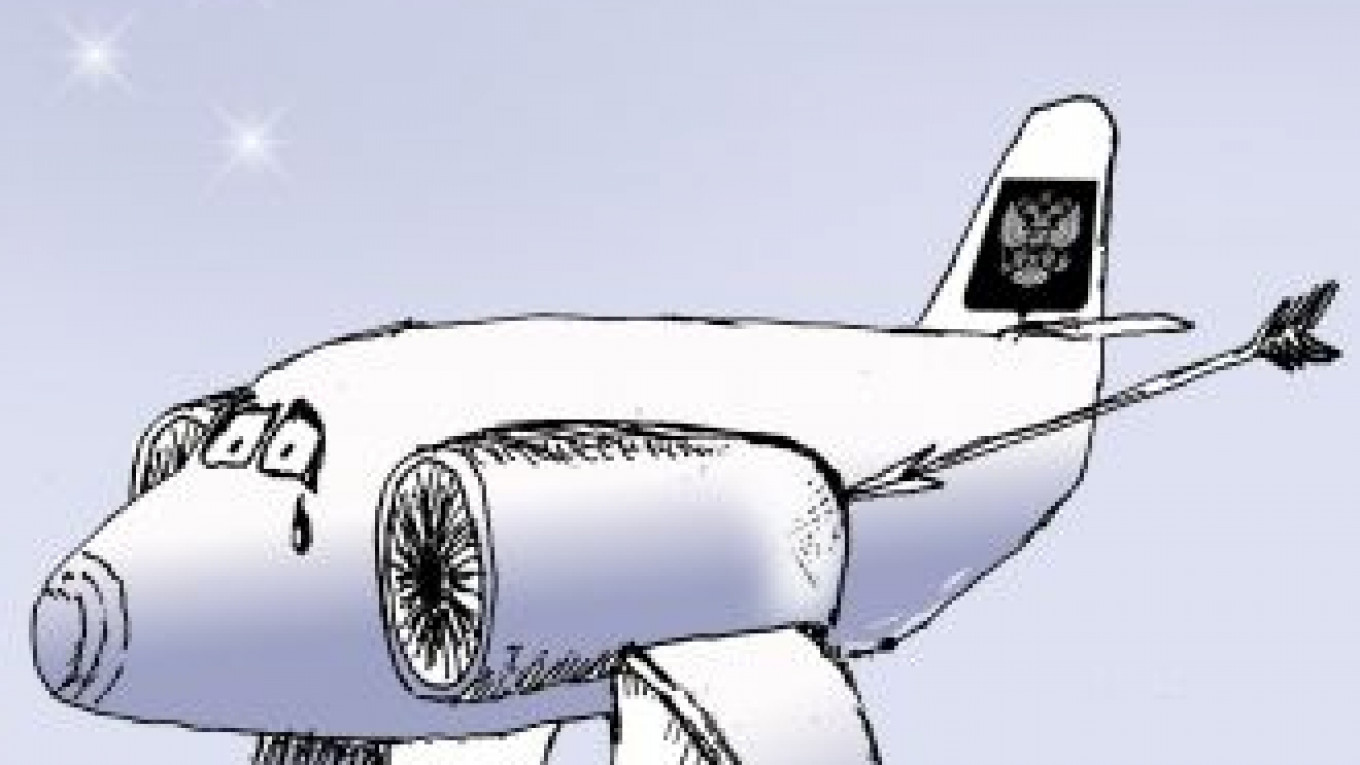Russia’s aircraft industry suffered two significant setbacks at the MAKS air show held outside Moscow from Aug. 16-21. First, the MiG-29 0VT had to abort its flight plan, and second, an engine surge prompted the pilot of the fifth-generation T-50 stealth fighter to abort at takeoff. The incidents could have led to disaster, and both drew attention to problems with the construction of the aircrafts’ engines. Indeed, while Russia is achieving steady progress in aircraft construction and experiencing its first successes in modern avionics manufacturing, its engine-building industry is trailing behind.
Perhaps the greatest concern is that Russia does not currently produce a competitive commercial aircraft engine (with the exception of the French-Russian PowerJet SaM146 engine). Questions remain regarding the technical specifications and production time frame of the PD-14 next-generation family of turbofan engines. The new MS-21 aircraft is forced to rely on U.S.-built Pratt & Whitney engines, a practice that obviously carries with it certain commercial and political risks.
The new and promising Russian-Indian military transport aircraft project faces similar problems. Plans call for eventually installing a version of the PD-14 engine produced in Perm, but at present the only realistic option is a 12-ton thrust motor manufactured in the West.
After a long period of inactivity, the project to reach full-scale production of the VK-2500 Russian helicopter engine seems to have gotten under way. At any rate, the Russian Helicopters company is slated to receive 400 of the engines from the St. Petersburg-based Klimov corporation by 2014 in a bid to reduce its precarious dependence on Ukraine, an unpredictable supplier that takes advantage of its monopoly position.
Some progress had been achieved in developing the TV7-117 engine for the Mil Mi-38 helicopter, but production has yet to achieve any momentum. But with the Russian Helicopters family of Ka-60/62 helicopters relying entirely on the French Ardiden motors, it essentially finances their development and guarantees their mass production. Yet Russia has made no attempt to acquire the rights to manufacture the engines domestically — and this is for a project financed and purchased wholly by Russia.
At the same time, funding was cut for development of the VK-1500, a Russian version of that engine. Russian Helicopters has adopted exactly the same strategy concerning the Arrius engine for its Ka-226T light helicopters. The government has allocated at least 150 million euros ($216.5 million) to buy 300 French aircraft motors, but could not find 40 million euros to start mass production of the VK-800, a Russian engine with the same power output.
Finally, major questions remain regarding Russia’s production of military aircraft engines. Although the first stage of research and development has been successfully completed for the 117 family of engines for the Su-35S and T-50 aircraft, it is unclear whether it will prove possible to create a full-fledged fifth-generation engine for the PAK FA second stage. The obstacle is not a lack of funding or innovative capacity at the Saturn plant, but the need for basic technologies — especially in materials science — that could require a great deal of time and money to develop.
The situation with the RD-33 engine is much worse. Development for that line of motors has practically halted. Despite sustained effort, the Chernyshev plant failed to produce a smokeless combustion chamber. And, in a major setback, Russian aircraft were excluded from consideration in a tender by the Indian government to purchase 126 medium multirole combat aircraft because the engines on the MiG-35 ostensibly did not conform to Indian standards. Those problems notwithstanding, it is crucial that the RD-33 engine undergo modernization. That motor is mounted on the carrier-based MiG-29K, the MiG aircraft with the best prospects for the medium term.
Ruslan Pukhov is director of the Center for Analysis of Strategies and Technologies and publisher of the journal Moscow Defense Brief.
A Message from The Moscow Times:
Dear readers,
We are facing unprecedented challenges. Russia's Prosecutor General's Office has designated The Moscow Times as an "undesirable" organization, criminalizing our work and putting our staff at risk of prosecution. This follows our earlier unjust labeling as a "foreign agent."
These actions are direct attempts to silence independent journalism in Russia. The authorities claim our work "discredits the decisions of the Russian leadership." We see things differently: we strive to provide accurate, unbiased reporting on Russia.
We, the journalists of The Moscow Times, refuse to be silenced. But to continue our work, we need your help.
Your support, no matter how small, makes a world of difference. If you can, please support us monthly starting from just $2. It's quick to set up, and every contribution makes a significant impact.
By supporting The Moscow Times, you're defending open, independent journalism in the face of repression. Thank you for standing with us.
Remind me later.


